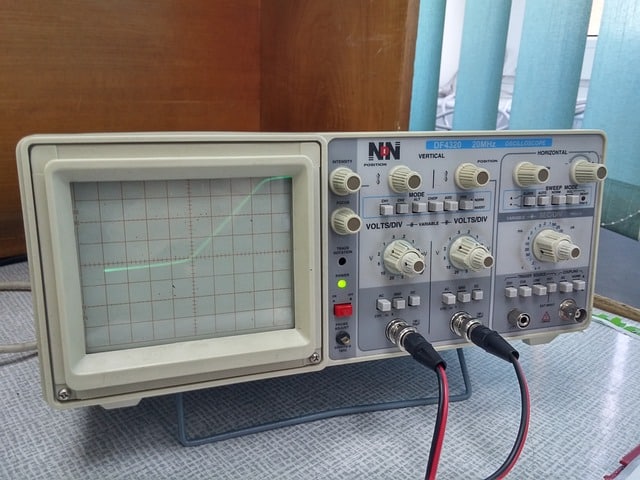
The oscilloscope measures signals and represents them graphically.
An oscilloscope is a device that displays physical quantities on a screen . In this way it allows rapidly changing electrical signals to be represented graphically .
Signals as coordinates
What the oscilloscope does is show the signals as coordinates . Generally, horizontally (the X axis ) the representation of time is reflected, while vertically (the Y axis ) the tensions are presented. The resulting image is called an oscillogram .
Some equipment uses a Z axis that represents another input , controlling the luminosity. Thus it is possible to dim or highlight certain sections of the trace depending on the transition speed or repetition frequency. Oscilloscopes, in short, are measuring instruments .
Analog and digital oscilloscopes
Depending on the technology they use, we can talk about analog oscilloscopes and digital oscilloscopes .
The analog oscilloscope uses a probe to receive the electrical signal and from that point it drifts it to the vertical section, where it can attenuate or amplify it, and then send it to the vertical deflection plates. They alter the trajectory of the electrons to give rise to the on-screen representation of the wave.
Both signal capture and manipulation are the same in a digital oscilloscope. However, between that point and the graphic representation that the user can see, there are different steps to process the data, which use a logical system, and not a physical one.
Values and resolution
The accuracy of measuring input voltage depends on the resolution of the oscilloscope. This value can be modified by adjusting the vertical scale. The bandwidth , meanwhile, indicates in which frequency range the device is prepared to offer reliable measurements, while the rise time refers to the fastest rise pulse that it is able to estimate.
The maximum input voltage , horizontal sensitivity , vertical sensitivity , number of channels and sampling rate are other characteristics that define the scope of the oscilloscope.
General applications
Oscilloscopes can indicate the voltage , period, and frequency of a signal, pinpoint noise, and calculate the phase between two signals. One of their main advantages is that they are not only used in the field of electronics, but they can be adapted to perceive very diverse signals with their respective change over time.
In this way, there are many sectors in which oscilloscopes are useful, since it is enough to install the appropriate transducer so that it is ready to measure the desired phenomenon. Due to their characteristics, they are useful for knowing the power of a sound , the heart or respiratory rate , the electrical activity of the nervous system , blood pressure or the vibrations of the different parts of a car in the manufacturing process. They can also be used to detect potential faults in a circuit, or to estimate the amount of noise that a given signal carries.

One of the applications of the oscilloscope is the measurement of electricity .
Origins
The history of the oscilloscope dates back to 1897, when the scientist Karl Ferdinand Braun , originally from Germany, created the first model based on a cathode ray tube developed by the English chemist William Crookes and made certain changes to direct the electrons towards a screen. making use of magnetic fields produced by alternating current.
The intervention of the German physicist Jonathan Adolf Wilhelm Zenneck was also necessary, who added plates capable of forming a beam and a magnetic field to scan the trace. It was not until 1920 that the first experiments were carried out with this revolutionary device , although the results were not entirely satisfactory because it was not stable enough. The Russian engineer Vladimir Kozmich Zvorikin modified the design with a thermionic emitter and, by 1931, the manufacture of a reliable oscilloscope was already possible.
